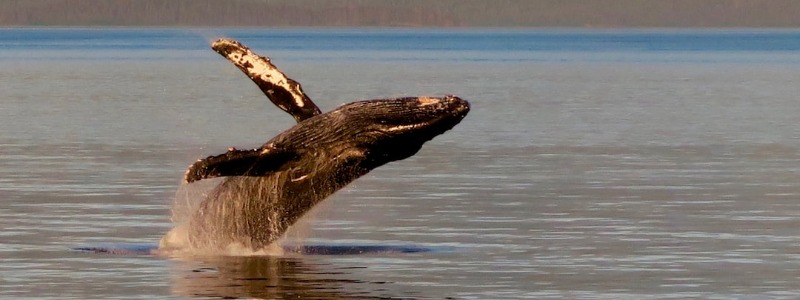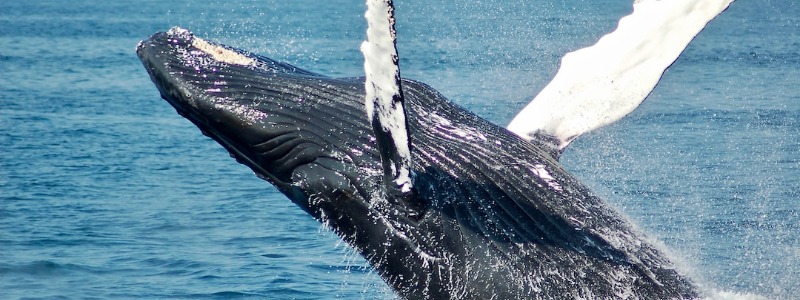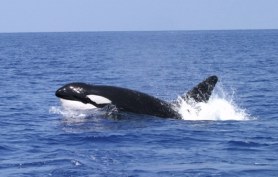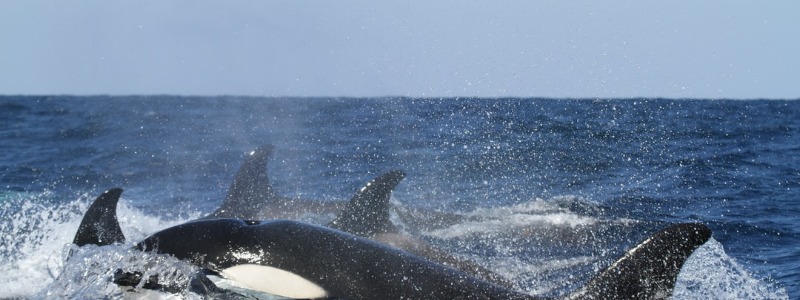Are there Whales in the Gulf of Mexico?
Contents
Yes, there are whales in the Gulf of Mexico. The most common species found in the area are Bryde’s whales, sperm whales, and killer whales. These species can be seen year-round in the Gulf of Mexico, although their populations may vary depending on the season. Additionally, there are occasional sightings of humpback whales and orcas (killer whales) in the gulf.
Bryde’s whales are typically found close to shore and can be spotted surfacing for air or breaching near the surface. Sperm whales prefer deeper waters and can be seen diving for food or playing with each other near the surface. Killer whales are also found in deeper waters and tend to travel in pods, so they may be spotted swimming together in large groups.
Whale watching is a popular activity in the Gulf of Mexico, with tours offered from many coastal towns. These tours provide an opportunity to observe these majestic creatures up close and learn more about them from experienced guides.
Sperm Whales
Sperm whales are the most common whale species in the Gulf of Mexico, with a population estimated at around 3,000 individuals. These large marine mammals can grow up to 65 feet long and weigh up to 45 tons. They are easily identified by their large heads and distinctive body shape.
Humpback whales
Humpback whales are found in the Gulf of Mexico year-round, although the population is not as dense as it is in other parts of the world. The humpback whale is a migratory species, and they migrate to the Gulf of Mexico during the winter months when food is more plentiful. During this time, they can be seen near shorelines and in shallow waters.

The humpback whale population in the Gulf of Mexico has been increasing over recent years due to conservation efforts. This includes regulations on fishing and hunting, as well as increased education about the importance of protecting these animals. As a result, many more humpback whales can now be seen swimming in the waters off Mexico’s coasts.
In addition to conservation efforts, research projects are also being conducted to better understand how these animals interact with their environment and how best to protect them from threats such as pollution or climate change.
Bryde’s Whales
Bryde’s whales are another common species found in the Gulf. They have a smaller body size than sperm whales, typically growing up to 40 feet long and weighing up to 20 tons. They are identified by their three distinct ridges on their head and back and their pointed dorsal fin.

Researchers from the National Oceanic and Atmospheric Administration (NOAA) and Japan’s National Museum of Science and Nature published a paper in January detailing their discovery that the 40-foot animal known as the Gulf of Mexico Bryde’s whale — thought to be a subspecies of the Bryde’s whale since 1965 — is, in fact, a separate and previously unnamed species.
This discovery was substantiated by genetic data and an examination of the animal’s skull structure. The proposed name for this new species is “Rice’s whale,” after Dale W. Rice, the cetologist (whale scientist) who discovered these whales in the Gulf of Mexico. This post uses the name “Gulf of Mexico whale” while the Society for Marine Mammalogy Committee on Taxonomy considers the new name.
Are Orcas Commonly Found in the Gulf of Mexico?
Yes, orcas are found in the Gulf of Mexico. The species is known as the killer whale and it is one of the most recognizable cetaceans in the world.
Orcas can be seen in the Gulf of Mexico year-round, but they tend to congregate more during certain times of the year. During summer months, they can be found closer to shore where there is an abundance of food such as fish and squid. During winter months, they migrate further offshore, sometimes traveling hundreds of miles away from land.
Orcas are highly social animals that live in family groups called pods. These pods are typically made up of related individuals and contain anywhere from two to 15 members. They communicate with each other using a variety of vocalizations and body language cues. Orcas also have sophisticated hunting techniques which allow them to take down large prey such as sharks and whales.
Killer Whales
Orcinus Orca, or Killer Whales, have been around as long as time can remember. But the orca (yes, like Shamu at Sea World) predominates in colder waters, like the north Atlantic and Pacific Oceans. While it’s true that killer whales can be found in most of the oceans of the world until recently it was thought the warm Gulf of Mexico was unsuitable to the desires and pleasures of the predatory species.
 Not so says federal biologist Keith Mullin. Killer whales have been known to live and swim in the warm Gulf after all, and a recent major sighting from a charter boat captain and crew, including quality video captured from the decks of the “Shady Lady”, proves otherwise.
Not so says federal biologist Keith Mullin. Killer whales have been known to live and swim in the warm Gulf after all, and a recent major sighting from a charter boat captain and crew, including quality video captured from the decks of the “Shady Lady”, proves otherwise.
Eddie Hall, Captain of the Shady Lady, says he stumbled across a pod of what looked liked orcas – or killer whales – playing in the Gulf about 90 miles off the Alabama coast.
“We couldn’t believe what we were looking at right away.
“One pod numbered around 75 whales. I think we counted about 200 killer whales that day, and I guess it would an understatement to say that we were surprised.”
 Hall says he and his crew spotted several pods of orcas when they grabbed a video camera to prove their discovery.
Hall says he and his crew spotted several pods of orcas when they grabbed a video camera to prove their discovery.
Hall said when they returned to the dock in Alabama, no one really believed their story.
“I’m glad we got the video,” he said.
The location of the Shady Lady was approximately 3 miles south of the Horn Mountain Rig. At 92 miles, when the sun came up, the answers to their questions literally began to appear. At 9:00 a.m. Friday morning on Halloween Day October 31st. The tuna were scarce and scattered, and for good reason. The crew of the Shady Lady couldn’t believe what they were actually witnessing – four pods of killer whales feeding on the tuna the anglers had hoped to catch.
According to Hall, there were four distinct pods of whales and each pod was feeding independently of the others. In the smallest pod, there were twenty-five to thirty killer whales feeding on tuna. Each of the other three pods had as many as one hundred members. A pod of whales could cover as much as an acre of water at any time, depending on how many animals surfaced at a time.
Whale Watching in Texas
Whale watching is a popular activity for visitors to the Texas coastline. From the end of December through March, humpback whales migrate from their summer feeding grounds in Alaska to the warm waters off the coast of Mexico and Texas. This makes it one of the best places for whale watching in North America!
In addition to humpback whales, other species like orcas, pilot whales, and sperm whales can be seen along Texas’ shoreline. Visitors are treated to a stunning view as they watch these majestic animals breach and dive just off the coast. With some luck, you may even catch sight of dolphins or sea turtles during your trip! Many tour companies offer excursions specifically dedicated to whale watching; these trips are typically 2-4 hours long and feature knowledgeable guides pointing out interesting facts about wildlife along the way.
Final Word
The presence of whales in the Gulf of Mexico is a topic that has been debated for many years. While there have been reports of sightings, it is not known with certainty if they are present in the region. In order to gain a better understanding of this matter, further research is needed to determine the prevalence and variety of whales in the region. This could include surveys, acoustic recordings, and tagging studies conducted by oceanographers and biologists.


There’s no debate , it’s a well documented fact that whales have been seen in the Gulf of Mexico.